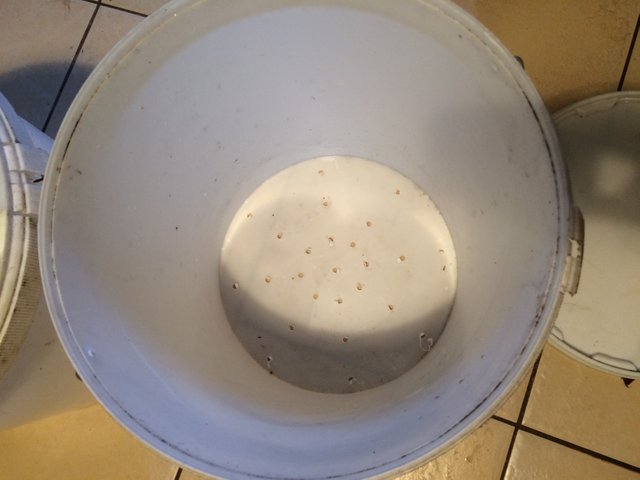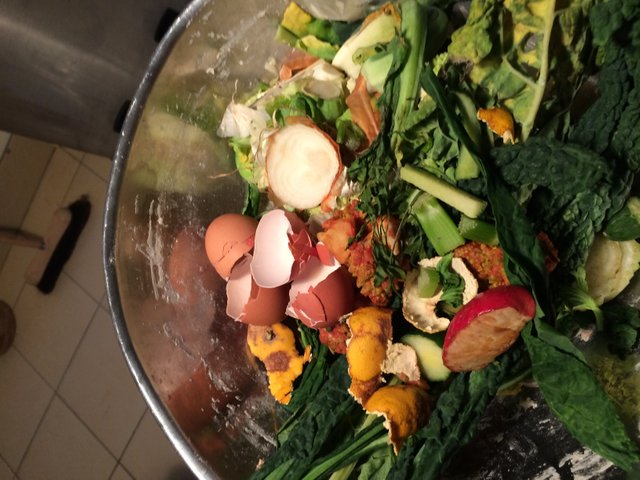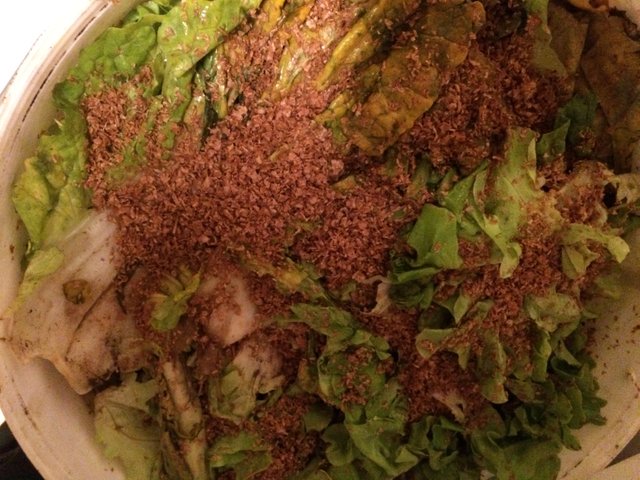So, I have been doing some research about composting methods, at the moment we have some conventional “hot” compost heaps made from pallets but I have been looking to diversify for a while now. We have tried worm bins but have not got the knack of it yet, we just seem to end up with a wet, smelly mess.

A few days ago I stumbled across some information about a Bokashi system of composting. From my reading into the subject it is a system based around the anaerobic fermentation of vegetables and food scraps. The benifits of this form of composting which appealed to me were the speed in which the material is broken down into compost, once the bin is full it apparently takes as little as two weeks before a usable compost can be obtained. It is also capable of breaking down items that are not usually added to conventional compost heaps such as chicken bones, bread and other cooked food scraps and as the fermentation takes place with added bacteria the bin should not produce bad smells, meaning it can be kept in the kitchen.
The one downside I could see was the cost of purchasing the micro organisms that are used to inoculate the Bokashi bin and ferment the contents. These come in the form of flakes of wheat bran impregnated with three different types of bacteria.
Whilst reading further into the subject I found some guides on creating your own Bokashi flakes which would cut some of the cost, this is something I would like to try if the system works, if I give it a go I will post the details.
To make the bins I decided to use time tall food grade plastic bins with tight fitting lids that I was given some time ago, I have a few kicking around waiting for a project. They also have the benefit of sitting nicely inside one another leaving enough of a gap for drainage.

I began by drilling around 30 holes in the base of one of the buckets using a 6mm bit, making sure to remove any plastic bits leftover from the drilling to avoid plastic contamination of the finished compost. 
This bucket sat inside another of the same dimensions which gave a 5cm gap between the bottom of the Bokashi bin and the lower container allowing any waste liquid to drain and be contained. This can be used as a liquid plant food when mixed with 10 parts of water. 
After putting all the parts together all that was left to do was to start filling the bin with our food scraps and the Bokashi bran in alternating layers, we are a family of six so it does not take us long to build up an impressive amount of food scraps. 

With the bin now full I have built a second one whilst I wait for the first bin to mature, they both seem to work fairly well at draining excess liquid and apart from a mild vinegar type smell there are no unpleasant aromas in the kitchen. When the two weeks are up I will post n update to see how the whole process is advanicing.
Thanks for reading.
Congratulations @h-perkins! You received a personal award!
Click here to view your Board
Downvoting a post can decrease pending rewards and make it less visible. Common reasons:
Submit
Congratulations @h-perkins! You received a personal award!
You can view your badges on your Steem Board and compare to others on the Steem Ranking
Vote for @Steemitboard as a witness to get one more award and increased upvotes!
Downvoting a post can decrease pending rewards and make it less visible. Common reasons:
Submit